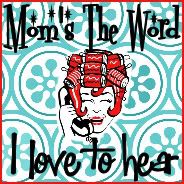I usually don't put other articles on here but this was just too good to waste. I hope y'all enjoy She titled it "
Is 'Stealth Fiber' Lurking in Your Foods?
About three years ago, a friend and I were at a natural foods store in the vitamins aisle. I needed more calcium and magnesium, which I take upon my doctor's recommendation to alleviate premenstrual mood swings. While my friend perused the multivitamins, I strolled up and down the aisle, reading labels. Then I spotted inulin, which I'd read was a great source of prebiotics. As a then-frequent sufferer of stress-related GI distress (this was during my "old life"), I was (and still am) a regular consumer of probiotics, those microorganisms found in your gut and in fermented foods like yogurt and kimchi, which can benefit your immune and digestive systems. In short, prebiotics are what feed probiotics. Anything that helps the good bacteria in your gut thrive and flourish sounded like a great product to me. Besides, I had just read that probiotics were the next big thing in nutrition.I grabbed a jar, shelled out $8.99, and, upon returning home, stirred two tablespoons into water, just as the jar suggested. It tasted mildly sweet but not too bad. Within an hour, I learned the importance of doing your research before buying any supplement! (Who impulse shops at a health food store, I ask?)
My stomach was visibly distended, hard to the touch, and gurgling loudly. I felt as though I had just gorged on Thanksgiving dinner--I was full and bloated. Later on, I had horrible stomach pains that left me doubled over. Forced to cancel my Saturday night plans, I headed to the Internet and read up on inulin, then chucked my jar in the garbage.
A few months ago, I ate a piece of high-fiber flatbread--something I do not eat--for an afternoon snack and ended up with the same symptoms, primarily stomach pains that kept me from a training run! I read the label after the fact, and a type of added fiber was the culprit. Since then, I avoided these ingredients in all quantities. As I recently read, I'm not the only one who has trouble digesting these added fibers.
You might not have heard of inulin, but if you've eaten high-fiber foods--granola and snack bars, breads, crackers, cereals, and even yogurt--that have popped up on the market in the last few years, you've probably eaten a form of it. Inulins, which are a type of carbohydrate considered to be soluble fiber, are increasingly being added to processed foods as "stealth fibers." What's a "stealth fiber"? Any fiber that is added to a food that wouldn't naturally have it. In addition to inulin, products also use polydextrose and maltodextrin, among others.
Found naturally in onions, garlic, jicama, bananas, and wheat, inulin is found in large quantities in chicory root, which makes it a popular source of "stealth fiber" for food companies. It is added to everything from diet fruit drinks to chocolate bars, muffins to breakfast cereals. Some high-fiber snack bars list it as the #1 ingredient, and it is sometimes listed on labels as chicory extract, chicory root powder/fiber, oligosaccharides, or fructans.
With a taste that can range from bland to mildly sweet, food processers use it to replace sugar, fat and flour; it has minimal impact on blood sugar, making it appealing for diabetics. When added to foods, like granola, snack bars, or cookies, it can make them appear healthier than they are.
For some people, the fiber causes no side effects. For others, who either consume large quantities or are sensitive to it like I am, it can cause some mighty unpleasant side effects. Research has shown that inulin may boost the growth of friendly bacteria in the colon, but SparkPeople's Head Dietitian, Becky Hand, warns not to rely on foods like "yogurt fortified with inulin to have the same health benefits as a high fiber diet."
Joanne Slavin, a registered dietitian at the University of Minnesota at St. Paul, recently studied the effects of inulin. After a night of fasting, participants ate a healthy breakfast that included orange juice mixed either with a placebo or with varying amounts of two types of inulin products: native inulin and shorter-chain oligofructose.
"After their 'fiber challenge,' participants were called several times over two days and asked about symptoms such as gas/bloating, nausea, flatulence, stomach cramping, diarrhea, constipation and GI rumbling.
Those that got any dose of inulin generally reported 'mild symptoms'; the highest scores in every symptom except constipation were reported by those who got 10 grams of oligofructose. The findings are in line with previous research that found the short-chain "sweet" inulin causes faster fermentation in the gut leading to more gas and gastrointestinal symptoms.
Flatulence was the most common symptom reported by all subjects who got fiber although symptoms were 'highly variable' among individuals and many subjects did not experience any, the investigators say."
Though considered both a carbohydrate and a type of fiber, inulin isn't treated the same by your body. Carbs are digested and become fuel; insoluble fiber works like a scrub brush to clean the intestines as it passes through the GI tract undigested, while soluble fiber forms a gummy coating on the intestines and helps prevent and slow absorption of various substances, including glucose and cholesterol. Inulin travels undigested to the colon, where the friendly bacteria (probiotics) in your gut feed on them. The probiotics ferment the inulin. The by-product of any type of fermentation is gas, and inulin can also cause diarrhea, bloating, and nausea. Experts say that though added fibers like inulin are called fibers, they don't have the same benefits as the real deal, which is found in whole grains, fruits, and vegetables.
This article clarifies the difference between fiber found in whole foods and added fibers:
"The most recently accepted grouping by the Institute of Medicine divides fiber into two categories: dietary and functional. Dietary is the kind found naturally and intact in oat bran, whole wheat, beans, prunes, peas, and almonds, and other plants. Functional refers to both the synthetic variety like polydextrose as well as naturally occurring inulin, which is extracted and purified from chicory roots."
Bottom line: We all need 25-35 grams of fiber daily, and our dietary experts recommend eating a diet rich in whole grains, beans, fruits, and vegetables to reach that goal. If you choose to consume products containing inulin or other "stealth fibers," read up on the side effects and limit the quantity.
I'm not a dietitian or health professional, but I can say that I would rather get my fiber the natural way. While you can get eight grams of fiber (about a third of your daily requirement) from sugar-free jelly beans, should you? One SparkPeople member decided fiber-rich jelly beans sounded too good to be true.



















No comments:
Post a Comment